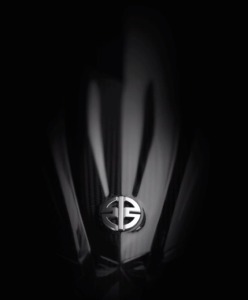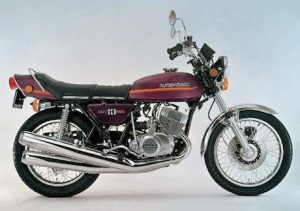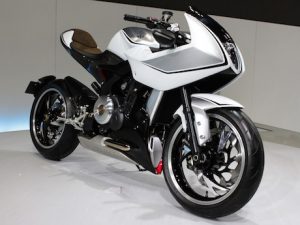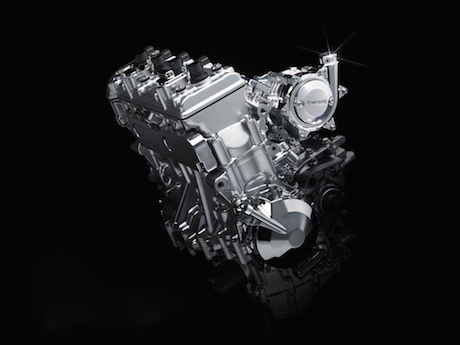Kawasaki is tipped to launch a super-charged or turbocharged 600cc four-cylinder sportsbike called the Ninja H2 at the Intermot show in Cologne on September 30 and bring back its historic company emblem.
The Ninja H2 is expected to be powered by the super-charged four-cylinder engine that Kawasaki showed at the Tokyo Motor Show last October.

Kawasaki isn’t saying the word “supercharged” but the Japanese company has now released four teaser videos (see below) and a statement that talks about using their “skills and experience from experts within not just the company’s motorcycle division but across its aerospace, gas turbine and other high-technology contemporary manufacturing disciplines”. The first video shows glimpses of the bike while the second video is titled “howling and chirping” and includes a soundtrack only with turbo wastegate noises. The third video is a graphic representation of Kawasaki’s technological advances over the past 136 years and the fourth video also looks back on their history and says Kawasaki is “leading the industry into a new era”. The latest video shows the rebirth of the historic Kawasaki emblem which may filter through to the other models.

Kawasaki says the Ninja H2 will capture the spirit of the 1970s 750cc Mach IV H2, but as you can see from the first video, it is a very modern interpretation. A fifth video is coming on Thursday.
While brands such as Yamaha, BMW and even Harley-Davidson are planning on an electric future, Kawasaki and Suzuki seem to be planning on a blown future. Suzuki also unveiled its turbo-charged 588cc parallel twin “Recursion” sportsbike at the Tokyo show.
Turbo and supercharging would allow these manufacturers to make lighter bikes with smaller capacity engines that would meet stringent pollution and fuel economy targets in Europe and the US without sacrificing much in the way of power. The Recursion concept sportsbike is only 30kW and 10Nm shy of the naturally aspirated GSX-R1000, but will be much lighter so it could have a similar power-to-weight ratio.
While forced induction, either by turbo or supercharger, would reap economy and pollution benefits, it seems unlikely to lift flagging sales of sportsbikes. Speed cameras and big fines have crippled sales of sportsbikes in recent years. Building lighter and more powerful bikes would not necessarily bring people back to the niche.
Turbo was the “next big thing” back in the ’80s with models from several of the Japanese manufacturers. It had manic light-switch power that made them not only difficult to control, but dangerous. They were also temperamental and unreliable.
However, modern low-boost mini turbos and superchargers which have revolutionised the car industry in recent years would be a lot more controllable than the rocketships of the ‘80s.

Meanwhile, there is still no word from Suzuki about their Recursion making it to market.
The sportsbike has a turbo-charged 588cc parallel twin that pumps out 75kW of power at 8000rpm and a massive 100Nm of peak torque from just 4500rpm.
Recursion means “flowing back, repeating” which is what a turbo does with the exhaust.
It has a cast chassis with a single-sided swingarm and single front disc brake which should be enough since it’s a mid-weight bike.
VIDEO 1
VIDEO 2


